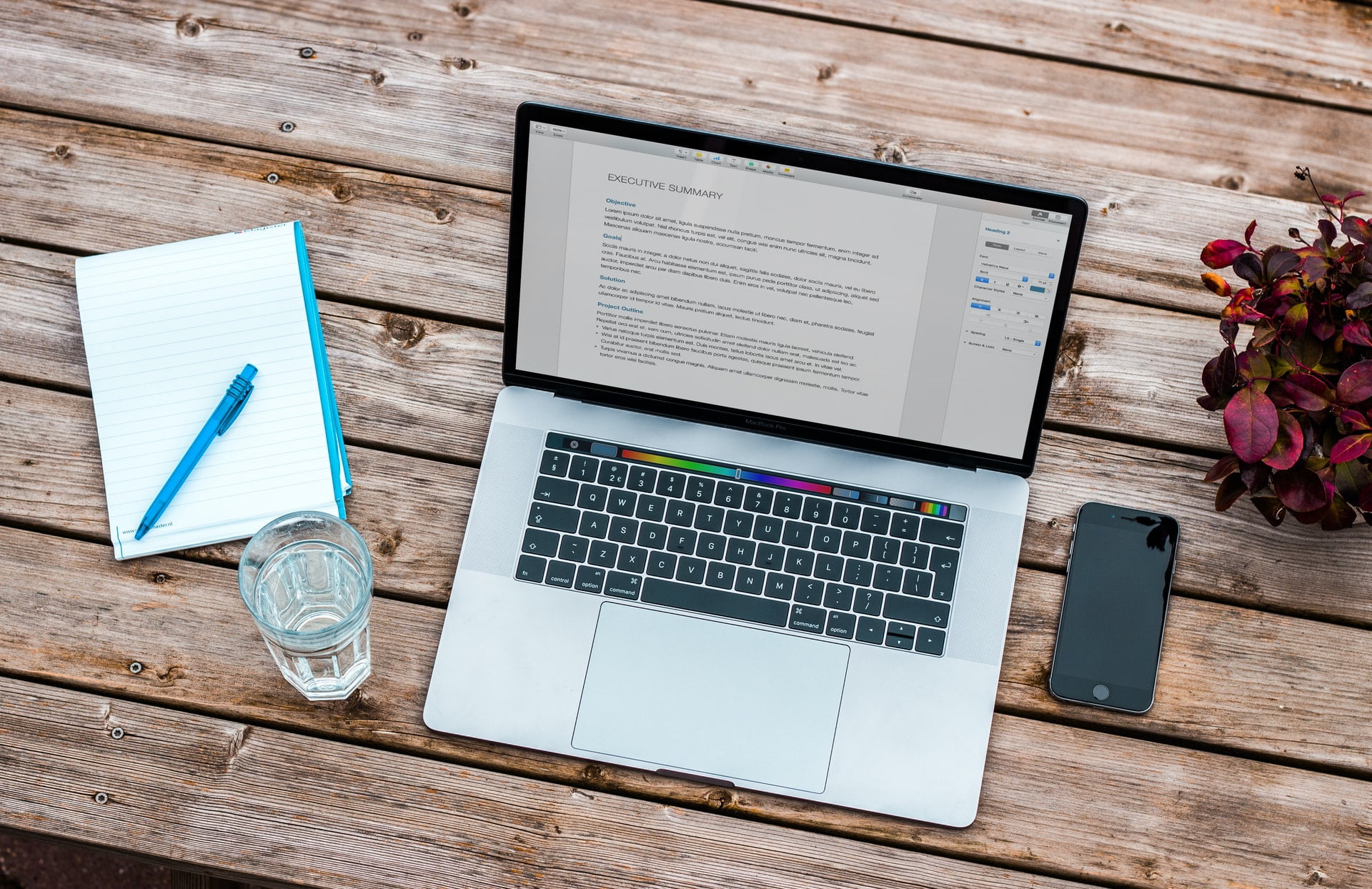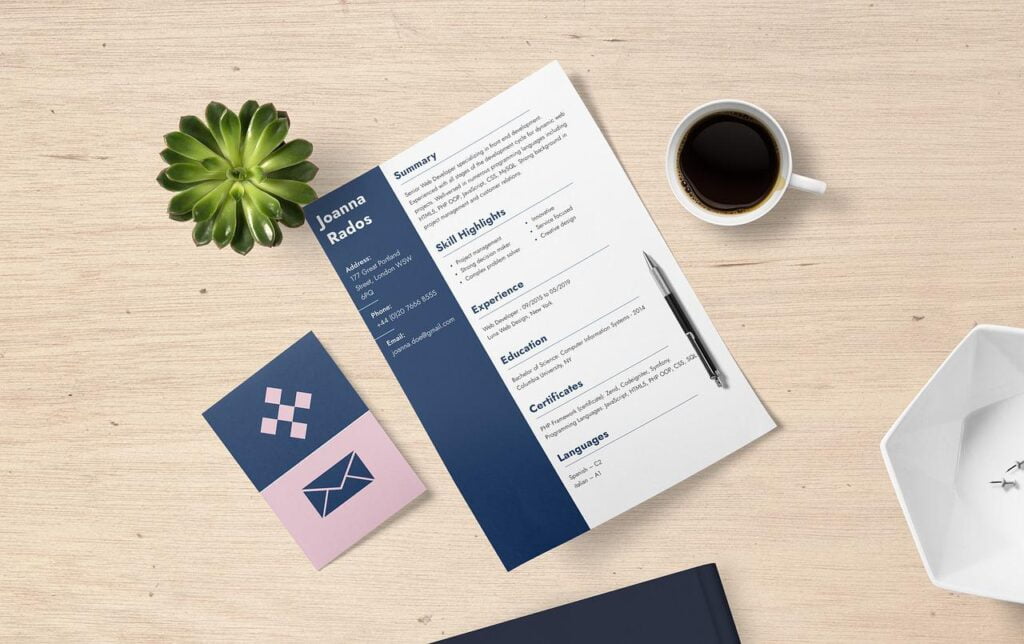Physical Address
304 North Cardinal St.
Dorchester Center, MA 02124
Physical Address
304 North Cardinal St.
Dorchester Center, MA 02124

Landing an internship abroad can be quite a challenge. The process of applying is very competitive, and your resume is often the deciding factor on whether you get an interview or not. In this guide, we will walk you through the steps necessary to perfect your resume for an internship abroad. We’ll cover everything from formatting to content and provide tips and examples along the way!
Before we get started, it’s important to note that there are typically two types of resumes: chronological and functional. Chronological resumes list your work experience in reverse chronological order (i.e., most recent experiences first), while functional resumes focus on skills and accomplishments instead.
For internships, a chronological resume is usually the best option as it allows employers to see your relevant work experience. However, if you don’t have much work experience, or if it is not directly related to the internship you’re applying for, a functional resume may be a better option as it will allow you to highlight your skills and accomplishments.
As you can see, both types of resumes have their advantages. It’s up to you to decide which type of resume is best for your needs.
Now that we’ve covered the basics let’s get started on perfecting your resume for an internship abroad!
The first step is to make sure your resume is formatted correctly. Remember, first impressions matter, so you want to ensure that your resume is easy to read and looks professional.
For internships, it’s generally best to keep things simple, which means avoiding any fancy graphics or design elements that could distract from the content of your resume. Here are other formatting tips to keep in mind:
When it comes to content, there are a few key things to keep in mind:
In addition, when applying for an internship abroad, you may also want to include any relevant international experience, such as studying abroad or volunteer work. Likewise, if your first language is not English, you may want to include that information as well.
Your resume summary or objective statement is the first thing potential employers will see, so it’s important to make a good impression. This section should be a brief overview of your skills and experience.
When writing your resume summary or objective statement, consider the following tips:
Here’s an example of a strong resume summary:
I am a recent graduate of XYZ University with a degree in Marketing. I have two years of experience working in the marketing department of a small company, where I was responsible for managing social media accounts and designing marketing materials. I am skilled in Photoshop, InDesign, and Illustrator, as well as proficient in Spanish and French. I am interested in obtaining an internship in the marketing department of a company where I can use my skills to make a positive impact.
As you can see, this resume summary includes information about the applicant’s skills, experience, and education. It also uses keywords from the job listing and explains how the applicant can be an asset to the company.

Now let’s take a look at some examples of internship resume objectives.
“To secure an internship in the XYZ field, where I can utilize my ABC skills and develop new DEF skills.”
This objective is specific and includes relevant information about the applicant’s skills and goals.
“A motivated college student seeking an internship in the XYZ industry. I am eager to learn and contribute to the company.”
This objective is brief and to the point. It also mentions the applicant’s willingness to learn and contribute to the company.
“I am a recent graduate of XYZ University, looking for an internship in the XYZ field. I am a quick learner and have a strong interest in the industry.”
This objective is straightforward and includes relevant information about the applicant’s education and goals.
Once you have a strong resume summary or objective statement, you can start working on the rest of your resume. Here’s a general outline of what to include, following the same order:
Let’s move on to some writing tips.
First and foremost, it’s important to keep in mind that your resume should be a reflection of your professional self. It means that the language you use, as well as the overall tone, should be formal and respectful. Avoid using slang or overly casual language, as it will not make a good impression on potential employers.
Furthermore, it’s essential to use action words when describing your accomplishments. Action words are verbs that demonstrate how you’ve made an impact. For example, instead of saying “responsible for XYZ,” you could say “managed XYZ” or “led XYZ.” Likewise, avoid using first-person pronouns (I, me, my).
Another tip is to be as specific as possible. For example, if you’re listing your work experience, include the name of the company, your job title, and dates of employment. And if you’re listing skills, don’t just say “good communication skills.” Instead, try something like “excellent written and verbal communication skills.”
Finally, remember to proofread your resume carefully before sending it off! This is especially important if you’re applying for an internship abroad, as employers will be looking for candidates who can pay attention to detail. So, typos and grammatical errors can be a significant turn-off for employers. If possible, ask a friend or family member to read over your resume as well.
One common question is: how long should my resume be? The answer may vary depending on your experience, but generally, it’s best to keep your resume to one or two pages.
If you have a lot of relevant work experience, you may need two pages. However, if you don’t have much experience, or if the internship you’re applying for doesn’t require a lot of experience, one page should suffice.
Remember, the goal is to make your resume as concise and easy to read as possible. Employers don’t want to sift through pages and pages of information – they want to be able to find the information they’re looking for quickly.
So, if you find that your resume is getting too long, try to cut out any unnecessary information. For example, if you’re listing your work experience, only include the most relevant roles. If you’re still having trouble keeping your resume to one or two pages, try using a smaller font size or adjusting the margins.
Now that you know what to include on your resume, it’s time to save and send it!
When saving your resume, it’s essential to use a professional file name. For example, “JaneDoeResume.doc” is a better choice than “My Resume.doc.”
When sending your resume, you may be asked for it in a specific file format. The most common formats are .doc (for Microsoft Word) and .pdf (for Adobe Acrobat). If you’re unsure which format to use, it’s always best to ask.
Finally, if you’re sending your resume via email, include a brief cover letter. In the cover letter, you can explain why you’re interested in the internship and why you think you’d be a good fit. You can also mention any attachments, such as your resume or CV.
If you’re not sure where to start, there are a number of online tools that can help.
For example, Resume Builder is a website that allows you to create a professional CV in minutes. All you need to do is enter your information and the tool will do the rest!
Another option is LiveCareer, which offers both a Resume Builder and Resume Templates. With Resume Templates, you can choose from a variety of pre-written resumes and then customize them to fit your needs.
Finally, if you need help with grammar or proofreading, consider using a tool like Grammarly. Grammarly is an online grammar checker that can help you identify and correct errors in your writing.
With these tools, you’re sure to create a resume that will impress employers – no matter where you’re applying!

A: No, you should not include your home address on your resume. Instead, you can include your current location (i.e., “New York, NY”) or say “available upon request.”
A: It’s up to you. If your GPA is high (i.e., above a certain threshold), you may want to include it. However, if your GPA is average or below average, you may not want to include it. Remember, the goal is to make your resume as impressive as possible.
A: No, you should not list all of your work experience on your resume. Instead, you should only include the most relevant roles. For example, if you’re applying for an internship in business, you may want to include your previous internships or jobs in business. However, if you’re applying for an internship in a different field, such as engineering, you may not want to include your previous job as a cashier.
A: If your resume is too short, you may want to add more information, such as your skills or relevant coursework. You can also try to make your font size slightly larger or use a different font altogether. Finally, remember that the goal is to make your resume as concise and easy to read as possible.
A: Yes, you should always include a brief cover letter when sending your resume via email. In the cover letter, you can explain why you’re interested in the internship and why you think you’d be a good fit. You can also mention any attachments, such as your resume or CV.
Now that you know how to format and what content to include in your resume, it’s time to start putting it together. Just remember to tailor your resume to the specific internship you’re applying for and highlight your relevant skills and experience. With a little effort, you’ll stand out from the crowd!
And that’s it! By following these tips, you can ensure that your resume will be in tip-top shape when applying for internships abroad. Good luck!